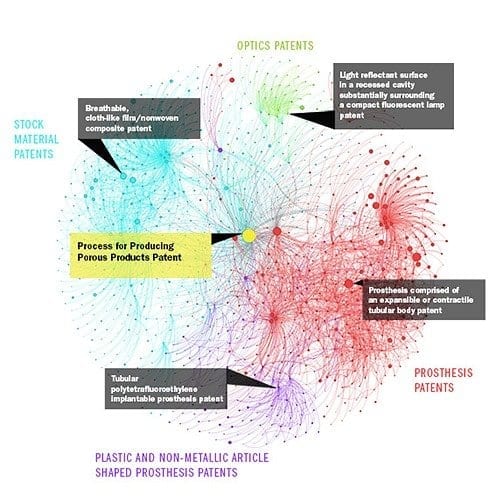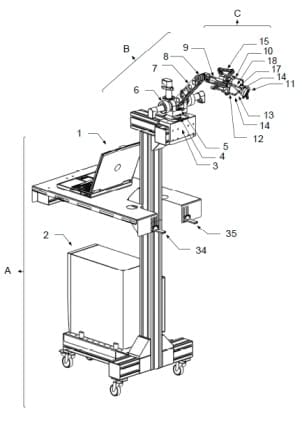
Princeton University has developed a method that offers a solution to data overload
Advances in computer storage have created collections of data so huge that researchers often have trouble uncovering critical patterns in connections among individual items, making it difficult for them to realize fully the power of computing as a research tool.
Now, computer scientists at Princeton University have developed a method that offers a solution to this data overload. Using a mathematical method that calculates the likelihood of a pattern repeating throughout a subset of data, the researchers have been able to cut dramatically the time needed to find patterns in large collections of information such as social networks. The tool allows researchers to identify quickly the connections between seemingly disparate groups such as theoretical physicists who study intermolecular forces and astrophysicists researching black holes.
“The data we are interested in are graphs of networks like friends on Facebook or lists of academic citations,” said David Blei, an associate professor of computer science and co-author on the research, which was published Sept. 3 in the Proceedings of the National Academy of Science. “These are vast data sets and we want to apply sophisticated statistical models to them in order to understand various patterns.”
Finding patterns in the connections among points of data can be critical for many applications. For example, checking citations to scientific papers can provide insights to the development of new fields of study or show overlap between different academic disciplines. Links between patents can map out groups that indicate new technological developments. And analysis of social networks can provide information about communities and allow predictions of future interests.
The Latest on: Pattern Recognition
- Round 6, No. 212: Jaguars draft Arkansas K Cam Littleon April 27, 2024 at 2:31 pm
The Jacksonville Jaguars selected Arkansas kicker Cam Little with the 212th pick. Little was the No. 2 kicker in The Athletic's Dane Brugler's position rankings.
- Even if we never get Stellar Blade on PC, action-RPG Aikode looks comparably swishon April 26, 2024 at 7:48 am
Tucked away in the corner of this year's Day Of The Devs at GDC I discovered a lavish, strangely unattended action-RPG, in which austerely beautiful young women in elaborate skirts kick the bejazus ...
- "Phenomenal" — A Student of the Game, George Goes From No. 16 Pick to a Breakout Rookie Seasonon April 26, 2024 at 7:23 am
George lived up to the hype, going from the No. 16 pick in the draft to starting over half of his games. He averaged 13.0 points, 4.4 assists, and 2.8 rebounds on a 40/33/85 shooting split in 27.0 ...
- Chief Meteorologist Provides Primer For Fire Management Team on Weather Pattern Recognition For West Virginia Wildfireson April 24, 2024 at 2:39 pm
Chief Meteorologist Chad Merrill provided insight to the fire management team at the New River Gorge National Park into the factors that lead to spring and fall brush fires. Allegheny Fire Zone Fire ...
- Navigate Bearish Markets With This Patternon April 17, 2024 at 7:58 am
Understanding Bearish Patterns is Critical to Investment Success Wall Street’s long and illustrious history is littered with a plethora of booms and busts. However, for most investors, bear markets ...
- This billionaire CEO uses 'pattern recognition' to make business decisions — and so does Warren Buffetton January 22, 2024 at 7:37 am
A billionaire CEO said he uses "pattern recognition" to help him make smart business decisions. Michael Rubin, the founder and CEO of sports merchandise company Fanatics, told Jay Shetty's podcast ...
- What is pattern recognition?on December 28, 2023 at 9:40 am
Pattern recognition is one of the four cornerstones of Computer Science. It involves finding the similarities or patterns among small, decomposed problems that can help us solve more complex ...
- Document and Pattern Recognition Labon April 15, 2019 at 4:47 pm
The Document and Pattern Recognition Lab started in Summer 2007. We research pattern recognition and machine learning techniques for extracting and searching information in documents and videos. Our ...
- ELEC_ENG 433: Statistical Pattern Recognitionon September 19, 2015 at 2:45 pm
CATALOG DESCRIPTION: Fundamental and advanced topics in statistical pattern recognition including Bayesian decision theory, Maximum-likelihood and Bayesian estimation, Nonparametric density estimation ...
- pattern recognitionon August 23, 2014 at 5:00 pm
[Bharath] recently uploaded the source code for an OpenCV based pattern recognition platform that can be used for Augmented Reality, or even robots. It was built with C++ and utilized the OpenCV ...
via Bing News
The Latest on: Data overload
- Why there is no load-shedding — and how quickly that could changeon April 26, 2024 at 5:52 am
The Eskom System Operator has explained how solar power is impacting to load-shedding, and how quickly the current situation can change.
- AI data center boom challenges utilities, may imperil climate goalson April 26, 2024 at 5:45 am
Artificial intelligence's thirst for electricity is conspiring with other factors to trigger a sharp spike in electricity demand that the U.S. is only beginning to address. Why it matters: How ...
- Salesforce debuts Zero Copy Partner Network to ease data integrationon April 25, 2024 at 1:31 am
The new ecosystem of ISVs and systems integrators aims to help Salesforce customers leverage third-party data by providing bidirectional support for zero-copy integrations with Salesforce Data Cloud.
- Intel's planned $36B expansion, new data centers, turbocharge PGE's west side power challengeon April 24, 2024 at 2:52 pm
It's a new twist on a much-discussed, wider energy transmission issue, one now pointed directly at an area expected to boost the regional economy.
- The Problem Behind the Problem, Part One: Data Overloadon April 24, 2024 at 1:28 pm
With the right mindset and appropriate processes in place, data can take its rightful place as an important linchpin between strategic planning and effective management.
- Load Balancer Market (CAGR) of 11.2%, Weathering the Storm Future-Proofing Your Business in Dynamic Marketson April 23, 2024 at 2:58 pm
Report Ocean has unveiled a cutting-edge research report titled “Load Balancer Market” for the year 2024, delving into critical facets such as industry dimensions, market share dynamics, growth ...
- Mixed freight changes in latest DAT, FTR market dataon April 22, 2024 at 7:21 am
Both DAT Freight & Analytics and FTR Transportation Intelligence reported very different load volumes, truck posts, and freight rates in Week 15, but both reported that rates ...
- 487 Danbury school educators and administrators to earn more than $100k by June 30, data shows:on April 20, 2024 at 2:00 am
Data shows many Danbury High School teachers also received overload pay for teaching classes beyond the required five periods a day.
- How Power-Hungry Data Centers and Large Industries Are Turning to Microgrids--On and Off-Gridon April 19, 2024 at 8:30 am
Up until recently, large load facilities have had a backup solution and have been grid connected. But because of grid constraints, they are choosing to be off-grid, according ...
- Electricity demand from AI, data centers is skyrocketing in Texas. Can ERCOT keep up?on April 18, 2024 at 4:00 am
Grid operators like ERCOT are rushing to adjust their forecasts for demand growth, amid projections data center power loads will double by 2030.
via Bing News









